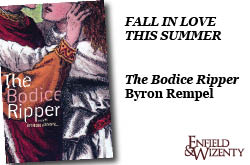As the fifth collection of short stories from an award-winning author, it’s no surprise that What Can You Do is an exceptionally written and thought-provoking read. The twelve stories make up just under 150 pages, and in each one Flood does a masterful job creating a sense of existence for her characters that extends beyond the pages of their story. Whether a story takes place over a few hours, like the brief period of quiet escape in “Calm,” or bridges several decades, as in the narrator’s resigned re-telling of his own past in “History Lesson(s)”—it’s often the sense of pre-existing and enduring conflicts that gives these stories so much weight.
For example, when the breakfast routine of Stacy and Mark, the mature couple camping in “Rabbit, Bird, Yarrow,” is disturbed by the domestic disputes of a young family nearby, the story progresses from peaceful descriptions like, “They ate local honey, early blueberries, and poured coffee,” to the point where Stacy is crying alone on the beach, remembering her own estranged daughter and thinking, “She’d crawl through that expensive tent’s vestibule, shake the Dad hard. Nothing ever, ever will hurt you so much, she’d say. Control yourself, buster!” Again, in “Food,” two fifty-something sisters listen to a large family bicker as they eat lunch at a nearby table, which brings up old but lingering resentments that have developed throughout their lives; and in “Summer Boy” a visit from a distant teenage relative emphasizes a wife’s pain at remaining childless throughout her marriage.
The content of this collection adds significance to everyday activities in a way that’s similar to the subdued, realist short stories of Carol Shields, Lisa Moore or Isabel Huggan. But Flood’s style is more concise, relying on the implied to add meaning to sentences and paragraphs, a technique that’s echoed in the overall structure of many of her stories where sparse, precise and straightforward prose infuses otherwise mundane situations with latent suffering, usually from a character’s past.
The significance of this ongoing, unseen suffering is hinted at in “Wing Nut” when the mother in the story researches local trees and learns that their roots can extend as wide as their branches. This root system remains largely hidden, but “continually grows.” Similarly, many of Flood’s characters are described at times that illustrate how their unaddressed pain has developed, and the events of their stories reveal how they have come to deal with, sublimate or ignore it, while also conveying a sense of its consequences.
Not every story fits neatly into this pattern. While referencing the historic past, “Dog and Sheep” remains in the fictive present as it describes the long trek of a collective group of somewhat clueless tourists, and the story I found most moving, “Open, Close,” describes the protagonist’s grief over the loss of her mother in a way that seems both visible and direct:
Wednesday’s time-table would allow me, if I walked fast, to spend an hour at home by myself. No. Not alone, for Mum filled each cubic inch. I heard her in the kitchen, I did, and ran to meet vacancy. A sound in her bedroom—rushed upstairs. Cried my face raw.
The scale of suffering in these stories also varies greatly, from violent trauma in stories like “Calm” and “Struggle” to bitterness and frustration in others. Next to issues like child abuse and mental illness, it might be tempting to condemn or dismiss the women who hold an intervention over social slights in “Apology,” or the woman in “Going Out” who attacks an old man over a passage in a detective novel. But Flood’s portrayal of urban, first-world characters is consistently (and sometimes painfully) human, which means one can frequently relate to them, even if they aren’t likeable.
What connects these stories is Flood’s remarkable portrayal of the specific, corrosive and lingering effects of problems and inner conflicts that won’t go away. Instead, they surface in common places and every-day activities, and when left unexamined they keep growing—so much so that they can become a habitual part of one’s existence. As Harold, the protagonist in “History Lesson(s),” thinks in the story’s opening paragraph: “Too often, the mind’s engine moves on long-laid rails,” which brings to mind the collection’s very appropriate title, What Can You Do. There’s no clear, obvious answer for any issue described in this collection, but Harold describes one in his own reflections—“Do nothing. Repeat as needed. Hope.” It’s not inspiring, but it’s honest, and like many situations in this collection it might be quite familiar. Thankfully, he also suggests an alternative: act.
Biblioasis | 148 pages | $19.95 | paper | ISBN# 978-1771961769






One Comment
Hello Joanna, and thank you for your thoughtful and enthusiastic review of What Can You Do.
I appreciated very much the way you proposed a kind of overall theme. I hadn’t thought of that — it’s always hard to draw threads together for a miscellany of stories — but you are quite persuasive!
And my thanks also for comments on some stories that most reviewers don’t mention, such as “History Lesson(s)” and “Apology.” To me these crabby contorted people are important.
You’re a good writer, too. Are you at work on a book?
all best,
Cynthia